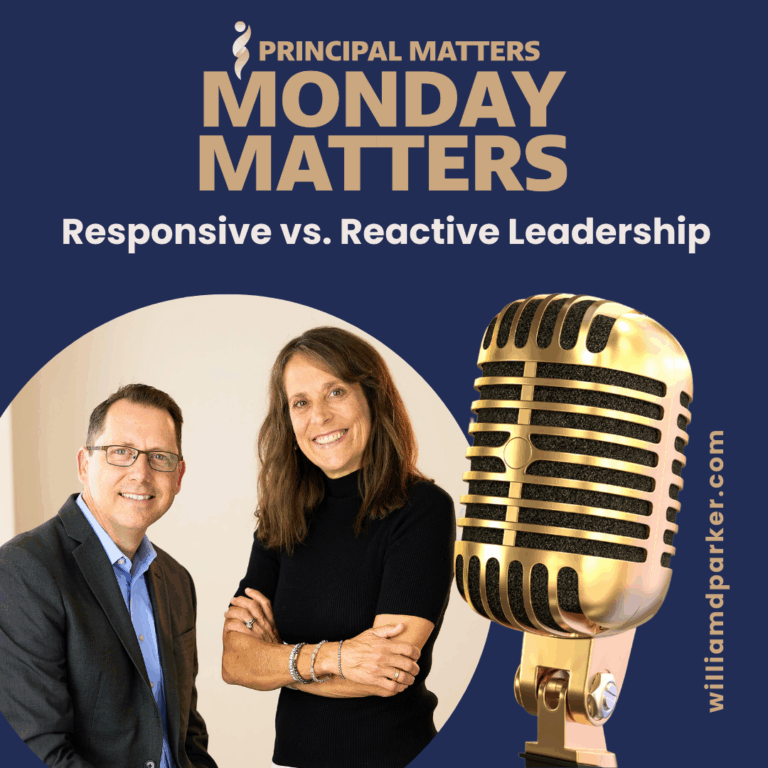Podcast: Play in new window | Download
Jenny is a returning student at her high school. She has a part-time job which keeps her up late most nights.

When her school opens this fall, she knows remote-learning is the option until her building opens again. She calls the school but gets a busy signal. Then she uses her iPhone to log into the school’s website. It’s confusing, but she finds a link for her counselor’s email and sends a short message asking for help. A few days later, she misses a call. The voicemail is her school counselor telling her she has a schedule for her and needs to check her email.
Jenny checks her email. She sees she has been assigned six virtual classes. But she has more questions than answers. When should she login each day? How much time should she spend on each subject? Who will monitor her classes and follow-up with her? Will these be her same teachers once her school reopens?
She is still working her part-time job, so she puts off figuring it out till the first day of school is scheduled. That morning, she wakes up late and logs in. She checks her email and sees she has several emails from teachers with a variety of messages and instructions. She feels overwhelmed. So she logs back into her virtual schedule and clicks on her first class, Algebra II, with Mr. Samuels. She doesn’t recognize the name. Maybe he’s one of the new teachers.
She sees the class has both online lessons and links to live virtual sessions with Mr. Samuels. She has already missed his first live session. She’s flush with frustration. How is she supposed to figure out how to wade through the different classes, assignments and virtual meetings?
By this time, she has texted several friends. They are as confused as she is. One of them tells her she received a sample daily schedule from another teacher and will share a screen shot with her. Jenny is frustrated and hoping the rest of her first day of school is not this confusing.
Keeping students front-and-center
As impossible as this year may seem with the choices involved in distant learning, it is important to keep in mind who is at the end of all the preparation: students. You have students returning to school from all kinds of backgrounds and experiences. Some of them will have supportive guardians. Others won’t. Of course, as principals you also serve teachers, staff and parents with more questions and concerns than you may have answers for at present. How can you be ready for all of them?
Questions every student is asking on the first day
How you prepare for students on their first day of school can either help or hurt their experiences for the rest of the school year. Since many schools are attempting hybrid learning approaches for the first time, give yourself grace in knowing you won’t do it perfectly. But keep some enduring lessons in mind. Harry Wong, author of The First Days of School: How to Be an Effective Teacher, reminds us of seven questions every student asks about his or her teachers:
1. Am I in the right room?
2. Where am I supposed to sit?
3. Who is the teacher as a person?
4. Will the teacher treat me as a human being?
5. What are the rules in this classroom?
6. What will I be doing this year?
7. How will I be graded?
Now let’s apply those to the current situation of schools re-opening. Some of those questions may need to rephrased, but as you work out your plans for communicating with students and families, keep those simple questions front-and-center.
Perhaps you will do this in a helpful FAQ handout that can be posted on your website and mailed to every family. Maybe you can divide students into lists and call each one until you’ve talked to him/her or a family member to go over these questions. Perhaps you can host orientation meetings with small groups by alphabet with everyone in masks and socially distanced.
Whatever strategy you use, make it a goal to put students at ease with answers to the most basic questions about their school day.
Questions every teacher and staff person asks on the first day
But students aren’t the only ones who need clarity. Your teachers and staff also want to know some questions that only school leaders can answer. And their questions will be even more specific. Think about Harry Wong’s questions from the perspective of your teachers and staff who will be asking:
1. What is my schedule, class roster, and when will I receive it?
2. What extra duties, assignments or activities might I expect and what new safety guidelines should I expect?
3. Who is my administrator as a person and how can I communicate with him/her even if we are not physically in school?
4. Will my school leader help me and treat me as a human being?
5. What are the new expectations, protocols, procedures, and policies in our school?
6. What am I expected to accomplish this year in the classroom and other duties?
7. How will I be observed, evaluated, mentored, graded or coached?
Tips for school leaders preparing for school – even in a pandemic
In addition to these basic questions, teachers will want a platform to ask pressing questions on ‘what-if’ scenarios. How will you accomplish this? Just as you keep students in mind, think about how you will prepare teachers. Create an FAQ for teachers (just like you do for students). This may be helpful to email or mail them ahead of time. Place this on your website for staff or share via Google Docs. The same information is helpful for guardians and family members. Here is an example of the back-to-school web-page for the district where my own children attend.
6 tips for returning to school (in-person or distance learning).
Whatever situation you may be facing this semester, here are six other ideas to keep in mind:
1. Build and re-build relationships.
As teachers, staff or parents returning to work, how are you reconnecting with them? If possible, call your teachers before school begins to reconnect and remind them that you may not have all the answers, but you are in this together and will find solutions together. Don’t just focus on work. Whether it’s hearing about summer trips, family updates, or meaningful moments in their lives, these conversations are important for building trust. They also open questions your teammates may have that are important for you to answer before school begins.
2. Utilize technology and social media.
Some teachers may want to connect via Zoom or Google Hangouts with you. Stay active in posting helpful reminders on your social media feeds. Whether you are using your school website, school-wide communication apps, or social media — share out important announcements and reminders various times before school begins to set expectations for the new school year.
3. Organize and manage accordingly – Plan ahead!
Obviously, no system will be perfect, but as you move into a school year, it is important to keep a list of to-do’s for your team and yourself. One way to do this is to look at the list of to-do’s from your past start the year. How can you modify it for the changes going into this one? Go through last year’s calendar to see if you’re missing anything. What events do you already anticipate will be cancelled or can be reschedule? Rely on a team (secretaries, assistants, lead teachers) who can help you stay on track as well.
4. Clearly define responsibilities.
Even as you work on expectations for teachers, don’t forget about non-instrucational staff. Reach out to each staff member to discuss well-defined key responsiblity areas for them as well. If you use Key Responsiblity lists, consider re-doing them for the unique expectations. Ask what responsibilities can be removed or replaced. With teachers and staff, don’t be afraid to say what is expected and providing it in writing.
5. Manage high anxiety – including your own.
Everyone is anxious (in good or bad ways) about the start of school, and this year the stress levels will be higher than ever. For better or worse, your community will be looking to the principal to set the tone. So manage the high anxiety by demonstrating a sense of calm and reassurance. One way to do this is by including celebration in your welcome-back – even if this is done virtually. Send a card or gift to welcome back your staff. Communicate positivity, and reassure them again and again that it can still be a great year and you are in this together. While you are at it, keep practicing your own healthy habits so you have energy and focus in the days ahead.
6. Host virtual or in-perons orientation meetings.
New teachers, old teachers, new students, returning students, new parents — you will have several groups who need to be welcomed in orientation meetings. Some principals are setting these up in small, socially distanced events. Each school will have different needs, and each new person or group entering your school will have different needs, but the goals are the same: communication clear expectations, be positive, and be available to answer questions.
Mastermind Takeaways
Let’s reimagine our first day with our student, Jen. As you think about how to anticipate her needs, what would a great day look like for her instead? In this week’s podcast episode, I include a few minutes from a one-hour conversation with principals participating in the Principal Matters ReOpening Mastermind. Listen-in for more great ideas and takeaways. Below are some more ideas generated from those conversations:
Additional Checklists for the School Leader’s First-Days of School
Here are some additional questions to ask as you start the school year:
· Have you posted “Welcome Back” signage at school or online?
· Have you included maps of your school for new students or FAQ’s for remote options?
· For in-person or schedule/device pick-up days: is signage clear and visible throughout the building?
· Have you shared master schedules in advance with teachers?
· What are your established arriving/departing protocols and routines?
· Did you update and plan for consistently implemented policies and procedures?
· Have parents and students been invited to an orientation or open-house before school (in-person or virtually)?
· Is your school website updated with current calendars and a welcome back message for parents and key information they should know?
· Have you updated and shared duty-rosters, activities and/or game calendars for teachers if applicable?
· Does your own work calendar include dates for state reports, observations, evaluations, and team-meetings?
Let’s Wrap This Up
As you think through your school-wide processes from the fresh perspective of a student, parent or teacher, it is easy to feel overwhelmed. But decide what steps to take moving forward so that everyone in your school or organization has clarity on what to expect. Make a list, and begin to work through these to-do’s one at a time. And ask your staff and teachers for input and help. Of course, also remember that creating the best “first days” for students and staff is also realizing your school members need many of these questions answered every day.
Now It’s Your Turn
Take time to reflect on the above questions, tips, and checklist. What are some steps you can be taking right now to prepare for a great school year? How can you keep the perspective of your students, teachers, staff, and parents in mind in each part of your preparation? Don’t do this alone. Who can you include on your team in accomplishing these goals?
*Reference: Wong, Harry and Rosemary T. Wong, THE First Days of School: How to Be an Effective Teacher, 2018.




